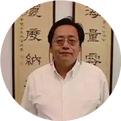01
All Courses by Ni Haixia
02
Comprehensive TCM Treatments for Common Diseases
03
Focused Study on TCM Topics
04
Online Reading of TCM Learning Books
1. Wuxin Fanre (Five Hearts Heat): Refers to the sensation of heat in the palms and soles, accompanied by a feeling of heat in the chest.
2. Liuzhu (Flowing Poison): A type of purulent disease where toxic evils flow irregularly and occur in deeper tissues, often seen in those with weak Qi and blood.
3. Pulmonary Metal: In traditional Chinese medicine’s theory of the five elements, the lung is associated with the metal element.
4. Stroke: Refers to cerebrovascular accidents. The condition may arise from deficiency of Yin essence or excessive anger affecting the liver, leading to internal wind.
5. Phlegm Fire: Refers to the accumulation of invisible fire and tangible phlegm in the lungs.
6. Ruler’s Official: Refers to the heart, which holds the primary position among the organs.
7. Xu Chuan (Deficient Asthma): Refers to deficiency of the lungs and kidneys, particularly the kidneys’ inability to hold Qi.
8. Jue: Refers to sudden fainting.
9. Rong and Wei: Refers to Ying Qi (Nutritional Qi) and Wei Qi (Defensive Qi).
10. Gan Wei (Liver Atrophy): Also known as muscle atrophy.
11. Qi Ni (Rebellious Qi): Refers to Qi rising abnormally.
12. San Jiao (Three Burners): Divided into upper, middle, and lower burners. The upper burner generally refers to the area above the diaphragm, including the heart and lungs; the middle burner refers to the area below the diaphragm, including the spleen and stomach; the lower burner refers to the area below the navel, including the kidneys, bladder, small intestine, and large intestine.
13. Zhen Huo (True Fire): Refers to kidney Yang.
14. Xue Wei Ying, Qi Wei Yi: Refers to Ying Qi (Nutritional Qi) and Wei Qi (Defensive Qi).
15. Long Lei Zhi Huo (Dragon Thunder Fire): Refers to kidney fire and liver fire. Heart and kidney fire. Dragon fire refers to kidney fire; thunder fire refers to heart fire.
16. Xiang Huo: In contrast to Jun Huo (Ruler Fire), generally refers to the fire of the liver and kidneys.
17. Shen: Refers to spirit or consciousness; traditional Chinese medicine states that the heart houses the spirit.
18. Gan Qi (Liver Qi): Refers to the essence of the liver.
19. Gan Xue (Liver Blood): Refers to the blood stored in the liver. Liver blood and liver Yin cannot be separated.
20. Shen Huo (Kidney Fire): The kidneys are Yin organs, containing both water and fire (true Yin and true Yang), which must maintain a relative balance.
21. Xin Huo (Heart Fire): Broadly refers to the functional activities of the heart; narrowly refers to the heart’s role in promoting blood circulation.
22. Shen Qi (Kidney Qi): Refers to the Qi generated from kidney essence, indicating the functional activities of the kidneys, such as growth, development, and sexual function.
23. Shen Shui (Kidney Water): Refers to the Yin fluid of the kidneys, also known as kidney Yin.
24. Xiantian (Pre-natal): Refers to the source of life and development in the human body, in contrast to Houtian (Post-natal).
25. Houtian: Refers to the spleen and stomach. The substances and energy required for life activities after birth depend on the Qi of the spleen and stomach to absorb the essence of food and water for nourishment.
26. Gan Wei Shen Zhi Zi: According to the theory of five elements, the liver belongs to wood, and the kidneys belong to water; water nourishes wood, hence the liver is the child of the kidneys, and the kidneys are the mother of the liver.
27. Gu Zheng (Bone Steaming): Refers to the deep-seated meaning of ‘bone’ and ‘steaming’ refers to the heat rising from Yin deficiency.
28. Xin Shen Bu Jiao (Heart-Kidney Disharmony): The heart is in the upper burner and belongs to fire; the kidneys are in the lower burner and belong to water. The Yang of the heart descends to nourish the Yang of the kidneys; the Yin of the kidneys ascends to nourish the Yin of the heart. Under normal circumstances, heart fire and kidney water interact harmoniously, maintaining dynamic balance. Disharmony occurs when kidney Yin is insufficient or heart fire is disturbed, leading to symptoms such as irritability, insomnia, vivid dreams, palpitations, and nocturnal emissions, often seen in patients with neurosis or chronic weakness.
29. Ren Mai (Conception Vessel): Begins in the lower abdomen (within the womb) and ascends along the spine. It also emerges from the perineum, travels up the midline of the abdomen, reaching the chest and neck, serving as the main channel of the Yin meridians.
30. Jun: Refers to the monarch drug, the main ingredient in a prescription.
31. Zhen Shui (True Water): Refers to kidney Yin, in contrast to kidney Yang, which refers to the Yin fluid stored in the kidneys, the basis for kidney Yang’s functional activities.
32. Gan Mu, Pi Tu: In the theory of five elements, the liver is classified as wood because it governs the smooth flow of Qi; the spleen is classified as earth because it governs digestion and transports the essence of food throughout the body, thus linking to the transformation of earth.
33. Cou Li: Refers to the texture of the skin, muscles, and organs, where Qi and blood circulate. Cou Li connects to the skin, serving as a pathway for the distribution of Wei Qi and the secretion of sweat.
34. Wang Lai Han Re: Refers to the alternating occurrence of chills and fever, either at regular or irregular intervals.
35. Jun Xiang Er Huo: Refers to the monarch fire and minister fire. The monarch fire refers to heart fire, as the heart is known as the

